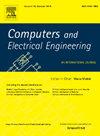Hardware architecture of efficient image dehazing technique for advanced driving assistance system
IF 4
3区 计算机科学
Q1 COMPUTER SCIENCE, HARDWARE & ARCHITECTURE
引用次数: 0
Abstract
Advanced Driving Assistance Systems (ADAS) rely on clear visual input, making robust image dehazing essential for safety and reliability. This paper presents a low-complexity, hardware-efficient image dehazing solution based on the Dark Channel Prior (DCP). The proposed architecture includes three key modules: Approximate Transmission Map Estimation (TME), Atmospheric Light Estimation (ALE), and Scene Recovery Module (SRM). Each component is optimized for real-time processing and implemented in Verilog Hardware Description Language (HDL). The complete system is synthesized and validated on the Zynq 7000 series Field Programmable Gate Array (FPGA) platform. Furthermore, the design is synthesized using 45 nm Complementary Metal Oxide Semiconductor (CMOS) technology via Cadence Genus to evaluate actual chip-level parameters such as area, power consumption, and delay. Experimental results demonstrate that the proposed design achieves high image quality with improved Structural Similarity Index (SSIM), Peak Signal-to-Noise Ratio (PSNR), and lower Mean Square Error (MSE) compared to existing methods. Furthermore, the hardware architecture offers substantial efficiency gains, with Area-Delay Product (ADP) reductions ranging from 0.801 % to 91.16 %, and Power-Delay Product (PDP) reductions from 6.67 % to 93.56 % over prior works. These results indicate that the proposed solution is well-suited for integration in real-time embedded vision applications such as ADAS.
先进驾驶辅助系统高效图像去雾技术的硬件架构
高级驾驶辅助系统(ADAS)依赖于清晰的视觉输入,因此强大的图像除雾对安全性和可靠性至关重要。提出了一种基于暗通道先验(DCP)的低复杂度、硬件效率高的图像去雾方案。该架构包括三个关键模块:近似传输图估计(TME)、大气光估计(ALE)和场景恢复模块(SRM)。每个组件都针对实时处理进行了优化,并在Verilog硬件描述语言(HDL)中实现。整个系统在Zynq 7000系列现场可编程门阵列(FPGA)平台上进行了综合和验证。此外,该设计通过Cadence Genus采用45纳米互补金属氧化物半导体(CMOS)技术合成,以评估实际芯片级参数,如面积,功耗和延迟。实验结果表明,与现有方法相比,该方法提高了结构相似指数(SSIM)、峰值信噪比(PSNR)和均方误差(MSE),获得了较高的图像质量。此外,硬件架构提供了显著的效率提升,与之前的工作相比,区域延迟产品(ADP)降低了0.801%至91.16%,功率延迟产品(PDP)降低了6.67%至93.56%。结果表明,该方案非常适合于ADAS等实时嵌入式视觉应用的集成。
本文章由计算机程序翻译,如有差异,请以英文原文为准。
求助全文
约1分钟内获得全文
求助全文
来源期刊

Computers & Electrical Engineering
工程技术-工程:电子与电气
CiteScore
9.20
自引率
7.00%
发文量
661
审稿时长
47 days
期刊介绍:
The impact of computers has nowhere been more revolutionary than in electrical engineering. The design, analysis, and operation of electrical and electronic systems are now dominated by computers, a transformation that has been motivated by the natural ease of interface between computers and electrical systems, and the promise of spectacular improvements in speed and efficiency.
Published since 1973, Computers & Electrical Engineering provides rapid publication of topical research into the integration of computer technology and computational techniques with electrical and electronic systems. The journal publishes papers featuring novel implementations of computers and computational techniques in areas like signal and image processing, high-performance computing, parallel processing, and communications. Special attention will be paid to papers describing innovative architectures, algorithms, and software tools.
 求助内容:
求助内容: 应助结果提醒方式:
应助结果提醒方式:


